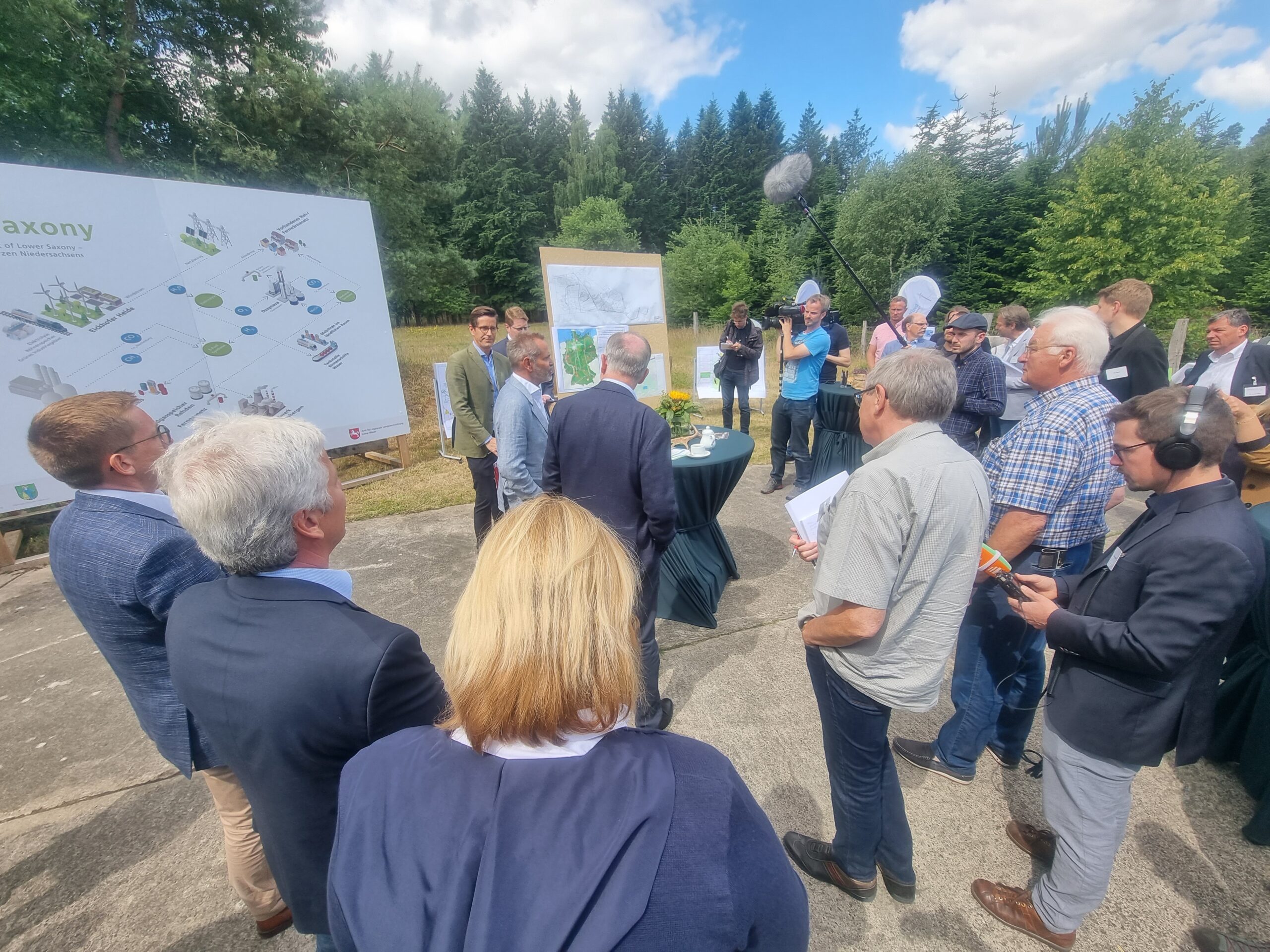Projekte
Steyerberg will zentraler Standort für erneuerbare Energien werden
Mit nur rund 5000 Einwohnern will Flecken Steyerberg im Kreis Nienburg zentraler Energiestandort in Niedersachsen werden. Auf einem ehemaligen Militärgelände soll im Projekt „H2art of Lower Saxony“ mit dem Ökostrom aus 12 Windrädern grüner Wasserstoff im industriellen Maßstab hergestellt werden.
Auf seiner Sommerreise besuchte der niedersächsische Ministerpräsident Stephan Weil am Dienstag, den 05. Juli Steyerberg im Kreis Nienburg. Dort soll auf dem 1.100 Hektar großen, ehemaligen NATO-Waldgelände ein Windpark der Firma WestWind Energy mit 12 Windrädern entstehen, die jährlich bis zu 180 Millionen Kilowattstunden Strom erzeugen können. Der Strom soll die Grundlast für einen Elektrolyseur sichern, könne aber auch ins Netz eingespeist werden, so die Organisatoren. Zusätzlicher Strombedarf kann durch die direkte Anbindung an die 380 kV Nord-Süd-Stromtrasse gesichert werden, die den Offshore-Strom in den Süden transportiert.
„Wir haben hier den idealen Dreiklang aus Windenergie, Biogasanlage und die Anbindung an die Nord-Süd-Stromautobahn. Dazu kommt die günstige Nähe zum künftigen Wasserstoffstartnetz, wie es im Netzentwicklungsplan Gas geplant wird“, erklärt Christian Alvermann von der kommunalen Wirtschaftsförderung“.
Der Wasserstoff soll lokal eingesetzt werden. Die ortsansässige Chemieanlage Oxxynova plant synthetische Kraftstoffe zu produzieren und bisher nicht verwertbare Kunststoffabfälle zu recyclen. Darüber hinaus können Wasserstofftankstellen in den Landkreisen Nienburg, Diepholz und Schaumburg beliefert werden, sowie eine geplante Wasserstofftankstelle für Binnenschiffe an der Weser. Auf dem Gelände selbst soll auch ein Wasserstoffspeicher eingerichtet werden. Den Wasserbedarf hierzu stellen vier ansässige Wasserwerke zur Verfügung.
Der Bau soll 2024 realisiert werden. In Stufen soll die Kapazität dann auf 1GW Wasserstoff erhöht werden.
Für den Bau der Windräder müssen rund 4 Hektar Wald gerodet werden, die wieder neu aufgeforstet werden. Für die Konstruktion sollen bereits bebaute Flächen weitergenutzt werden, aber auch leerstehende Flächen, auf denen Pinien bereits durch Trockenheit abgestorben sind.
 Quelle: NWN
Quelle: NWN
Niedersachsens Ministerpräsident Stephan Weil informiert sich vor Ort. Bild: NWN
Bleiben Sie informiert – mit unserem Newsletter „NWN direkt…“
Sie möchten über diese und andere spannende Wasserstoff-Projekte aus Niedersachsen informiert bleiben? Dann melden Sie sich bei unserem Newsletter an!
